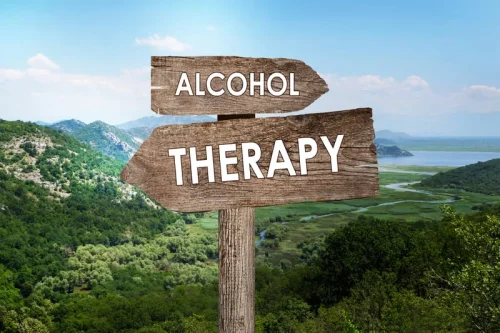
During the recovery period, a person may experience a depressed mood and appetite, discomfort, and memory problems. Even after a person is released from hospital care, it can take up to a month for them to feel normal again. It may seem like a person has to drink a lot to get to this stage. But if a person drinks very quickly, they can get to this stage before long. At a BAC of 0.45 percent or above, a person is likely to die from alcohol intoxication. Emergency medical attention is necessary at this point to avoid death and severe health problems.
Middle Stage (Moderate AUD)
Symptoms of alcohol poisoning typically correspond to blood alcohol concentration (BAC) levels. Although different resources will vary, most will tell us that there are six to seven stages of intoxication experienced by most people. These stages progress based on Blood Alcohol Content (BAC), so people progress through them as they have more to drink. We base differences on several things, like genetics, body weight, frequency of intoxication, overall general health, and more.
Frequency of Adult Binge Drinking by State, 2022
Alcohol poisoning happens when there’s too much alcohol in your blood, and parts of your brain shut down. It’s caused usually by binge drinking and can lead to death or brain damage. If you see signs of alcohol poisoning, such as throwing up, seizures, slow breathing, or severe confusion, don’t hesitate to call 911.
Caron Outpatient Treatment Center
Seek immediate medical care (call 911) for any of the symptoms of alcohol poisoning listed above. A person does not need to exhibit all of these symptoms to be in danger of dying or sustaining permanent brain damage. Alcoholism, or alcohol use disorder, is a chronic stages of alcohol poisoning condition in which a person cannot control his or her drinking despite craving alcoholic beverages. According to the 2022 National Survey on Drug Use and Health (NSDUH), 29.5 million people in the U.S. aged 12 and older had alcohol use disorder in the past year.
- Theories suggest that for certain people drinking has a different and stronger impact that can lead to alcohol use disorder.
- Your trusted resource for health and wellness information and the latest medical advances to help you and your family live better.
- It causes physical and behavioral symptoms that range from mild to severe.
- Alcohol poisoning also causes thousands of deaths per year.
- The table below shows common symptoms at each level of alcohol intoxication.
- Other long-term complications of heavy alcohol use include addiction, cancer, cirrhosis, liver disease, vitamin deficiencies, and mental health problems.
Continue Learning About Seven Stages of Alcoholism
Other kinds of alcohol that you might have around the house, such as isopropyl alcohol (rubbing alcohol) and methanol (wood alcohol), are toxic in a different way. Alcohol use and taking opioids or sedative hypnotics, such as sleep and anti-anxiety medications, can increase your risk of an overdose. Examples of these medications include sleep aids, such as zolpidem and eszopiclone, and benzodiazepines, such as diazepam and alprazolam. Even drinking alcohol while taking over-the-counter antihistamines can be dangerous. The more you drink, especially in a short period of time, the greater your risk of alcohol poisoning.
- If anyone shows signs of severe intoxication, contact emergency services immediately.
- Individuals will continue drinking despite the negative consequences that come with it, they develop cravings for alcohol, and they may struggle to control intake levels once started.
- At this stage, a person should feel like their normal self.
- People who binge drink have a higher risk of experiencing alcohol poisoning.
When a person is intoxicated, they may exhibit both physical and behavioral symptoms. Some people may be able to drink more alcohol than others, with fewer effects. Having too much alcohol in your blood stops your body working properly and can be life-threatening. If possible, give emergency personnel information about the type and amount of alcohol the person consumed. Also, let them know how long it has been since the person stopped consuming alcohol. Following an isopropanol ingestion, the patient may not complain of anything specific.
- Healthcare and mental health professionals may describe this stage as severe AUD.
- While there isn’t a guarantee you will be below 0.08 BAC at this stage, it is a good marker to prevent some of the harmful effects of alcohol if you continue drinking.
- The confusion stage of intoxication occurs when someone reaches a BAC of 0.18 to 0.30.
- It results from the consumption of an excessive amount of alcohol within a relatively brief time.
- They can recommend treatment for AUD, which may include medications and behavioral therapies.
- Although different resources will vary, most will tell us that there are six to seven stages of intoxication experienced by most people.
What is Alcoholism?
Using alcohol during adolescence (from preteens to mid-20s) may affect brain development, making it more likely that they will be diagnosed with AUD later in life. However, most people with AUD—no matter their age or the severity of their alcohol problems—can benefit from treatment with behavioral health therapies, medications, or both. If the person lives with an underlying alcohol use disorder, more symptoms may occur. It is a regular practice to give small amounts of beer to race horses in Ireland. But the amount of alcohol in one drink may be much higher than those in the list above.

This can include the experimental use of alcohol, occasional use, or occasional binge drinking (once or twice a year). Initial use of alcohol may not yet be a problem for the individual or those close to them. Occasional alcohol consumption may cause difficulties while they are under the influence or the following day, but they have not become addicted.
What are alcohol intoxication symptoms?
A BAC of 0.08 is the legal limit of intoxication in the United States. A person can be arrested if they are found driving with a BAC above this limit. A mixed drink or cocktail could have more than one serving of alcohol in it. Ethanol also increases levels of adenosine, an inhibitory neurotransmitter that promotes sleep. In every U.S. state, it is illegal to drive with a BAC of over 0.08%.

A person will enter the euphoric stage of intoxication after consuming 2 to 3 drinks as a man or 1 to 2 drinks as a woman, in an hour. You might have a slower reaction time and lowered inhibitions. Although young people are most likely to engage in binge drinking, deaths from alcohol poisoning usually involve men between the ages of 35 and 64, according to the CDC.
